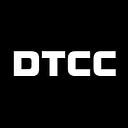T+1: The Impact of One — and Only One — Day to Settle Securities

With the transition to T+1 less than a year away for North America’s securities markets, Frank La Salla, DTCC President and CEO, joined other industry CEOs to discuss the opportunities and challenges of this change to market structure during the SIBOS CEO panel, T+1: The Impact of One — and Only One — Day to Settle Securities. Joining La Salla on the panel were Lieve Mostrey, CEO, Euroclear and Kevin Sampson, President, The Canadian Depository for Securities Limited | CDS Clearing and Depository Services, Inc. The panel was moderated by Julia Streets, Founder & CEO, Streets Consulting.
There are multiple benefits of a shorter settlement cycle, including a reduction in counterparty risk, reduced margin requirements, improved processing efficiency and increased liquidity. In addition to the U.S. and Canada, which are moving to T+1 on May 28, 2024, and May 27, 2024, respectively, India has already made the switch, and many other markets are analyzing its benefits. Mexico is working toward a T+1 migration at the same time as the U.S. but no official date has been issued.
Related: Industry’s T+1 Testing Window Opens
T+1 is not just a settlement issue — it touches all parties in a trade’s lifecycle. It’s also a global event, impacting investors accessing North American markets. However, while the U.S. has made the necessary preparations and is now in testing mode, concerns are growing about the readiness of other regions. It is incumbent on all players in the ecosystem to review their operating models and make any necessary adjustments prior to the go-live date next year.
La Salla spoke of the global interest in the dynamics of accelerating settlement, noting a recent delegation visit from APAC wanting to know how they can prepare. “There is interest from around the world on how to realize the benefits of a shorter settlement cycle,” he said.
Why Does T+1 Matter?
Automation. For many firms, T+1 is the catalyst needed across counterparties to look at modernization and process redesign and to reassess new technologies and solutions, as the accelerated timeline adds pressure across all parties in the ecosystem. The biggest opportunity firms can take away is reduced operational risk through modernization.
Ultimate reduction in costs. The move will reduce settlement latency, which will make cash and securities available to investors sooner. These improvements will provide end investors with better utilization of their assets.
Reduced margin requirements. In a credit risk event, there will be less unsettled trades in the pipeline, allowing a quicker resolution and reducing overall market risk. Estimates from NSCC show a 31% reduction in its overall clearing fund requirements — a savings of about $3.5 — $4 billion based on historical clearing fund requirements.
It is incumbent on all players in the ecosystem to review their operating models and make any necessary adjustments prior to the go-live date next year.
The T0 Move Will Be Geometric
There are still eight months remaining before the switch to T+1. To reach that end — whether that is T0, T0 end-of-day or continuous settlement — firms need to think about their technology resilience.
Related: Shortening the Settlement Cycle
The move from T+3 to T+2 to T+1 has been a linear evolution, but the move to T0 will be geometric, La Salla explained during the panel. He said the industry has many issues to address before thinking of T0 as such a move would remove the benefits of netting. Accelerating settlement requires careful consideration, industry coordination and a balanced approach to avoid creating capital inefficiencies and introducing new, unintended market risks.
